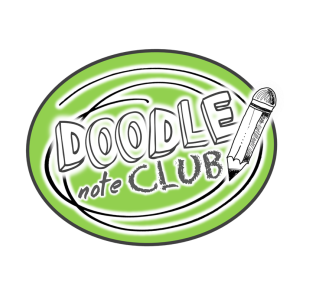
Oftentimes, when sharing the awesome brain benefits of doodle notes, we say doodle notes improve problem-solving skills. What does this mean? How do they do it? Today, I want to really dive deeper into this statement!
What are Problem-Solving Skills?
According to ASQ, “problem-solving is the act of defining a problem; determining the cause of the problem; identifying, prioritizing and selecting alternatives for a solution; and implementing a solution.”
There are many different ideas on how to approach problem-solving, but most sources agree, these are the general steps:
- Identify the problem
- Think about the problem (Consider all different solutions)
- Create a plan to solve the problem
- Carry out the plan
- Reflect and evaluate the results

Problem-solving isn’t just mindlessly answering questions. To truly solve a problem, the student needs to think about it to come up with a solution.
How does doodling help?
In “Unfolding the Napkin”, Dan Roam (author of “Back of a napkin”) explains that we can solve any problem by drawing simple pictures.
He provides a startling fact, along with an excellent visual. “75% of the neurons of our brains are visually centered.” This means doodles, sketches and pictures can be used as powerful explanations, no matter the problem at hand.

Although Roam writes for the corporate world, his ideas are still completely relevant to teachers in the classroom. Presentations in a business meeting and teaching have, essentially, the same goal- to inform, engage, and enlighten the other individuals in the room. And presenting our information in a visual can greatly benefit both parties.
Doodle Notes as Problem-Solving Tools
If you think about it, whenever you teach, no matter the subject, you are often posing a question to be answered; your students are given problems that are begging to be solved.
Whether you are teaching students to read and create Box and Whisker Plots in Math or about the government in Ancient Rome, you can break it down into simple questions. What do the boxes represent? What are the three parts of the Roman government? And problems to be solved come directly from these questions and even from the answers, as you lead to the next step in each lesson.
With doodle notes, students are given the opportunity to visually lay out the “answers”. They have space to doodle their own ideas and to create notes that make sense to them.

Dual-Coding Theory
With Dual-Coding Theory, we can activate both the right (artsy) hemisphere of the brain and the left (logical) side of the brain at the same time; the two hemispheres communicate across the corpus callosum.

When we integrate images and text we help students build a stronger understanding of each concept AND a stronger understanding of the relationships between the terms and ideas.
So, this boosts problem-solving skills, because students are building stronger understandings, and therefore, are spending significantly less time and effort on the second step (mentioned above)- Think about the problem (Consider all different solutions).

Do you use doodling to solve your own problems? It’s wild to realize the solution to any problem can be found at the tip of your pencil!
